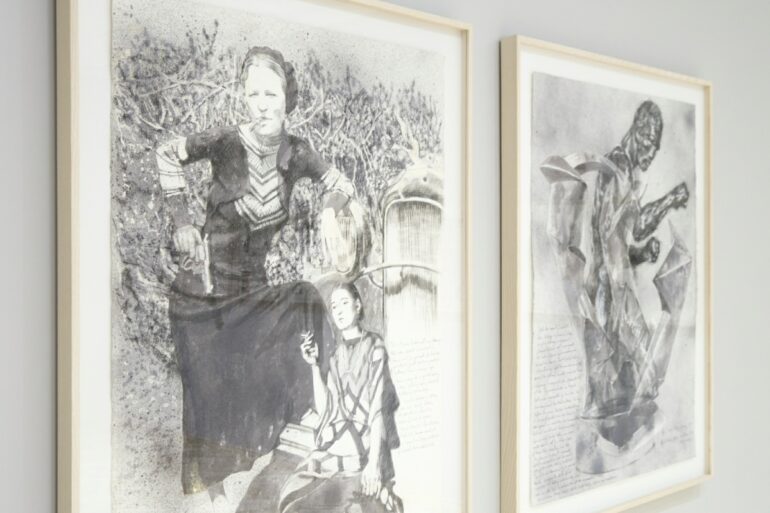

February 5, 2021
Exhibition runs: 5.02. – 26.03.2021
Prolonged until: 7.05.2021
Curated by: Katarzyna Krysiak, Przemysław Strożek
Partner: ZAiKS
Paweł Książek’s Plates is a series of works which allude to the illustrative-cum-informational plates used in encyclopaedias, dictionaries and the natural history textbooks that became popular in the eighteenth and nineteenth centuries as incontrovertible compendiums of knowledge. They are intended to bring out surprising and revealing connections not only between individual events, works of art and the biographies of artists, filmmakers and musicians, but also in a wider aspect, between, scholarship, biology, philosophy and anthropology and, at the formal level, between the shapes, colours, and lines of sketches and scores. They are a vivid record of fleeting thoughts and notes based on quotations from scholarly studies. They reveal a particular model for interpreting selected cultural texts, a model which is grounded in the principles of assembling images, visualising selected quotes and noting individual, subjective analyses in one place. They constitute a specific collection and montage of fragments, autonomic, yet coherent, expressed in the form of connections between language and images, scholarship and art, intellect and intuition. Here, the interpretation of historical and scholarly material emerges on the basis of endeavours to develop a common language for presenting the facts through the determining rigour of historiography, as well as intuition and artistic imagination. In truth, it is an endeavour to create a compendium of alternative knowledge emerging in the sphere of visualised, intuitive connections supported by sources derived from available scholarly publications.
Based on facts drawn from those works, all the episodic stories in Plates fall into cohesive narratives, while the numbering need not always be organised from first to last. There is neither chronology here nor a chain of cause and effect. At the formal level, grounded in montage, and at the semantic level, rooted in the exploration of episodic events, they point to an open-ended practice of creating a sequence of alternative interpretations in the sphere of cultural history, where every phenomenon and every concept has a relationship, often hidden. Because the plates do not constitute a closed formula, they can be developed in any direction with no real end. They bring to mind Aby Warburg’s Mnemosyne Atlas, a collection of visual phenomena fulfilling the function of illustrative-cum-informational plates and depicting artistic and social changes. Like the Mnemosyne Atlas, which was created between 1925 and 1929, Książek’s plates turn out to be a kind of boundless visual archive, within the ambits of which, infinite interpretations based on extracting meanings from the most diverse images occur.
The problems broached by the Plates series are focused on a great many diverse matters, from which we need to single out the primary questions of the artist’s role as a historiographer, an art historian and a (post)scholar. Can a detective-like and factual stance in a scholar-artist analysing a work of art by asking questions and carrying out individual, exploratory searches for connections between paintings and scholarly texts, have an influence on the history of art and, at the same time, on new and refreshing perceptions of artistic phenomena rendered commonplace in that history? Can the schematisation of scholarly works be broken and a new concept for scholarship indicated? Can an art historian base their studies on interpretations formulated by artists? Can an art historian themself improvise? Can art, in the end, give rise to changes in the field of art history itself?
and